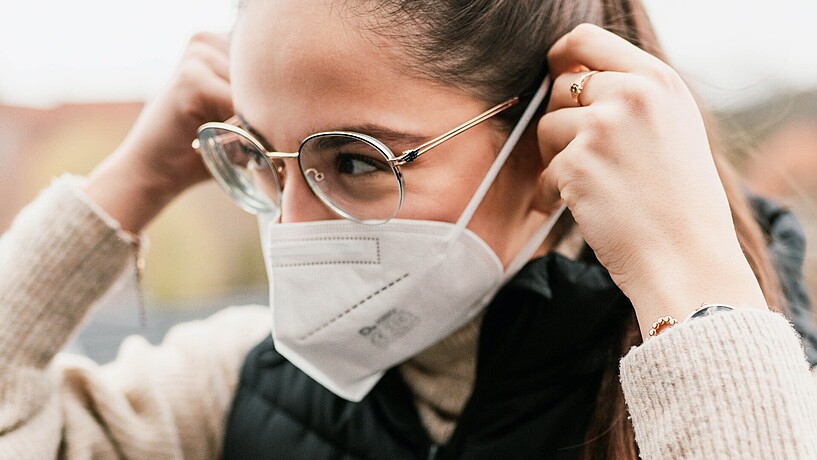'FFP2 masks are a valuable contribution.'

Worn properly, FFP2 masks provide very effective protection against coronavirus transmission.
The interview was carried out on 13 April 2022. At that time it was expected that FFP2 masks would remain mandatory at Hamburg's universities until 25 May. This regulation has now been changed as a result of current pandemic-related and political developments. You can find all of the current regulations on the Coronavirus update web page. HAW Hamburg strongly recommends that individuals continue to wear medical masks (ideally FFP2 masks) after 30 April. This will ensure a relatively secure environment for study and work on campus and will make it possible for vulnerable individuals to come to the university.

Why is it still mandatory to wear FFP2 masks?
Dr. Ursula Peschke: Scientific studies have shown how well FFP2 masks protect against becoming infected with the coronavirus. For example, a detailed study from the Max Planck Institute investigated how high the maximum risk of a coronavirus infection in various scenarios is, with and without a mask. It showed that the risk of transmission sinks drastically when both people are wearing properly fitting surgical or – even better – FFP2 masks.
When I wear an FFP2 mask, am I mostly protecting myself or others?
You are mostly protecting yourself. The masks are highly effective, but not 100 per cent. But if both people are wearing an FFP2 mask, this increases the level of protection and the likelihood of becoming infected is less than 1 per cent. So there is a definite benefit to both people wearing a mask. Quarks.de created a very good graphic from the various scenarios in the Max Planck study which is worth having a look at.
If both people are wearing an FFP2 mask, this increases the level of protection and the likelihood of becoming infected is less than 1 per cent.
Why are FFP2 masks required? Aren't surgical masks good enough?
Apart from the somewhat different properties of the materials – FFP2 masks filter the air we breathe in, while surgical masks are a barrier to the air we breath out – FFP2 masks have the clear advantage that there are fewer surfaces where leakage can occur. With surgical masks, the air – and with it the aerosols – can flow through the sides. They therefore do not provide as much protection as the tighter-fitting FFP2 masks.
What should I pay attention to when wearing an FFP2 mask?
It is important to adjust the mask to the shape of your face using the wire that sits across the bridge of your nose. If it is sticking out from your nose it won't have the desired effect. Additionally, you should ensure proper hygiene when using it. This means only touching the mask's elastic bands, not crumpling it into your pocket, and disposing of it when it is damp. Moisture from the breath can significantly reduce the mask's effectiveness. After an eight-hour workday, a mask should be thrown away. That is a good gauge.
How long do you think we'll still have to wear masks in our everyday lives?
That is naturally very difficult to predict and depends on how the rate of infection develops. But at the moment they are a very valuable contribution to everyone's safety and for the on-campus university operations that we've all wanted back so much. If the rate of infection sinks in the summer, we'll need to review the situation again.
Interview: Britta Sowa
